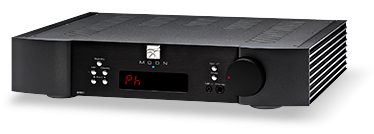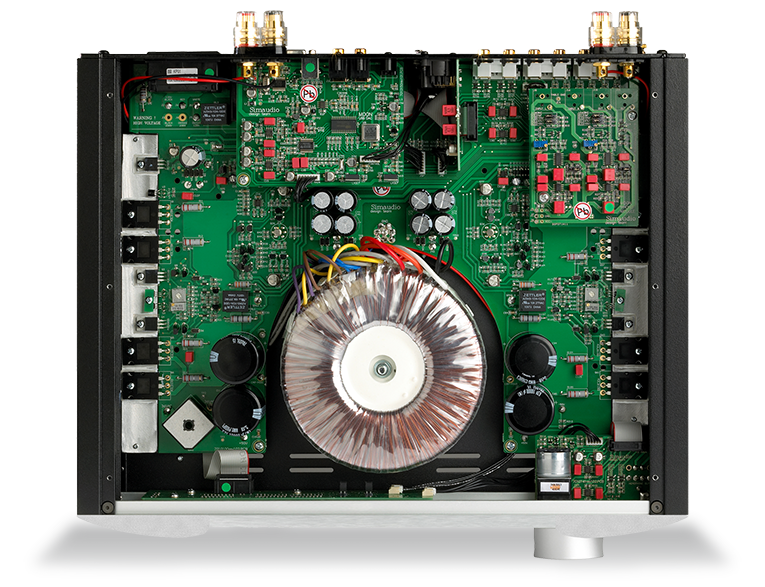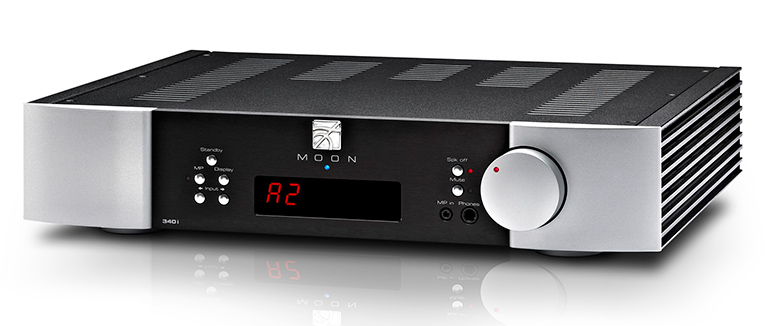
 The 11th edition of Merriam-Webster’s Collegiate Dictionary defines the noun albedo as “reflective power; specifically: the fraction of incident radiation (as light) that is reflected by a surface or body (as the moon or a cloud).” Typically, albedo is expressed as a decimal figure within a range of 0.00 to 1.00: a value of “0.00” means that 0% of light is reflected, and “1.00” that 100% of light is reflected. Our moon has an average albedo of 0.12 -- it reflects 12% of the light it receives. In other words, not much.
The 11th edition of Merriam-Webster’s Collegiate Dictionary defines the noun albedo as “reflective power; specifically: the fraction of incident radiation (as light) that is reflected by a surface or body (as the moon or a cloud).” Typically, albedo is expressed as a decimal figure within a range of 0.00 to 1.00: a value of “0.00” means that 0% of light is reflected, and “1.00” that 100% of light is reflected. Our moon has an average albedo of 0.12 -- it reflects 12% of the light it receives. In other words, not much.
Simaudio, which is based in Boucherville, Quebec, Canada, makes a Moon that provides a dramatically better reflection of its input. The Moon Neo 340i is a 100Wpc integrated amplifier ($4600 USD) that can be ordered with one or more of three built-in options: a stereo pair of balanced inputs ($250), a digital-to-analog converter that can handle signals up to 192kHz ($600), and/or a phono stage configurable for moving-magnet or moving-coil cartridges ($300). (The options can be retrofitted later, but at higher cost.) My review sample had the balanced inputs and DAC, for a total retail price of $5450. According to Simaudio, the Moon Neo models incorporate style cues and circuit upgrades that emulate those of more expensive Moon Evolution siblings, including circuit changes that “noticeably improve sound quality.” The Neo 340i is a class-A/AB design; the first 5Wpc of power are generated in class-A.
Removing the Neo 340i from its packaging is simple, if not necessarily easy. Extracting from its snug, high-quality, multilayered packaging a dense block of metal measuring 16.9”W x 3.5”H x 14.8”D isn’t really a complicated procedure, but the Neo 340i’s 28-pound weight requires a bit of planning if you don’t want to drop it.
That done, I was immediately struck by the design and quality of the Neo 340i’s case. High-quality outer finishes are uniformly applied to the thick, well-machined parts, and I could feel no torsional flexibility in the case or chassis. The side panels are black, orange-peel-finished heatsinks, their shallow fins running the Neo 340i’s entire depth, from front to rear. The top (its finish matches that of the heatsinks), bottom, and rear plates are nearly 1/8” thick. Ventilation is provided by slots in the top panel, through which the circuits are partly visible. The thick front panel of brushed aluminum contains all controls, the digital display, and two outboard “cheeks,” finished in a flatter black, that are thicker toward the center and curve gracefully to the outer edges. Moon Neo models are also available in black with silver cheeks or silver with silver cheeks, but differences in the finishes and textures give even the standard all-black versions visual appeal. The overall look is Simaudio’s typical industrial style, and vastly more appealing to me than the standard black box with flat front. The only structural connectors visible when the Neo 340i is in use are the six screws securing the top plate.
Setting up and using the Neo 340i were intuitive enough to be done without reference to the manual. The included remote handset controls the most frequently used features -- but considering the price, build quality, and style of the Neo 340i itself, this generic piece of plastic is a disappointment. The central LED display glows red with large, old-school, seven-segment characters. It tells you which input has been selected, and the resolution input of the optional DAC. Five silver buttons to the left of the display control Standby, MP (for the front-panel media-player input) on/off with status LED, Display on/off, and Previous/Next Input. With the two silver buttons to the right of the display, each with its own status LED, you can select full Mute of all output, and turn the Speakers on or off -- convenient when using the 1/4” headphone jack immediately below. Next to the 1/4” jack is an 1/8” jack for the MP (media player) input. To the right of these, a 2”-diameter volume knob cuts into the right front cheek. On the knob itself is a red LED to indicate the level, and it rotates with a fantastically smooth feel that was neither too light nor tight for my taste. The dial also has a curved depression for a more secure grip.

Toward the top and at either end of the Neo 340i’s rear panel are speaker binding posts, which essentially bracket all of the analog and digital inputs. From left to right as you face the rear panel are a phono ground post, four stereo pairs of analog single-ended inputs (RCA), one stereo pair each of fixed and variable single-ended outputs (RCA), and, on my sample, the optional stereo pair of balanced inputs (XLR). Next are four digital inputs: one optical, two coaxial RCA, and one USB. Below these are SimLink in/out jacks for component integration, ports for infrared and 12V triggers, and an RS232 jack for software updates and custom programming. At rightmost are the fuse bay, the master Power switch, and a standard IEC inlet for the removable AC cord (included). One of the RCA stereo input pairs can be configured as a pass-through to allow the Neo 340i to be used as part of a home-theater system. The quality and feel of all of the control buttons and connectors are very high.
Two quibbles: First, the 1/8” MP jack on the front panel seems an afterthought. Its control button toggles between whatever media player is plugged into it and the rear-panel inputs, but I’m surprised that this input wasn’t included in the rotation of the rest of the Neo 340i’s inputs. Second, the limited real estate on the rear panel creates an ergonomic problem: The right speaker terminals are almost directly above the first two RCA inputs. If you use bare wire or spade connectors, your speaker cables will be hanging down in front of those first two analog inputs, making them unusable. This problem can be worked around by connecting your right speaker cable from the top, which will put pressure on the cable and connection, as well as make your cable stick out above the rear of the chassis and be visually inappropriate in most settings. I find these two points surprising, considering the detail and effort that have clearly gone into the design and general ergonomics of the Neo 340i.

The circuit design and parts of the Moon Neo 340i are of a high quality similar to that of its exterior. Simaudio says that it has an oversize power supply and a custom toroidal transformer. Custom-manufactured, Simaudio-designed bipolar output transistors are claimed to provide wider bandwidth, lower distortion, and longer life than other types -- and, in their words, “unprecedented gain linearity resulting in improved bass response and even more accurate sonic reproduction.” The Neo 340i was designed to be left powered up at all times; it ran warm but never hot to the touch. Running at these cooler temperatures will give the Neo 340i an “ultra-long life expectancy,” says Simaudio.
Sound
With the many ways the Moon Neo 340i can be used, I had to limit how I used it for my critical listening. Assuming that many users would do the same, I decided to run the integrated amplifier with its own DAC, letting the Neo 340i handle all work between my computer and speakers.
The sound of the Neo 340i was wonderfully engaging, with a wide, laid-back soundstage that never thrust itself on me, and so was not fatiguing to listen to for long periods. In the listening for this review, I frequently found myself getting caught up in the music rather than critiquing nuances of the Neo’s sound. I listened to deeper tracks, and often let my Mac’s shuffle mode lead me randomly through musical genres. I got caught up in Dire Straits’ Brothers in Arms (16-bit/44.1kHz AIFF, Warner Bros.), and listened to almost the entire album before remembering that I needed to write about as well as listen to the Neo 340i. This 1985 release has always drawn me in with its intoxicating sound, big soundstage, and frequently dark vocals. It’s a favorite of mine, and I know it well. After Mark Knopfler sings the last line of “Why Worry,” a long closing section includes a drum track that seems to physically become set back from the listener. It seemed plausible that a drummer was playing at the end of a long, narrow space that extended from the back of my equipment rack. The precision of the various percussion sounds on this album struck me as very natural and comfortable. The next track, “Ride Across the River,” opens with the melody played on an electric guitar placed front and center. This is one of those recordings that, through the Neo 340i, made me feel that I could hear every detail of the pick on the strings, the slight scratch on the wound strings, and fingers bending strings up and down the fingerboard. “The Man’s Too Strong” follows, with an acoustic guitar carrying the tune. In this track, the slightly raspy sound being drawn out of the instrument by a talented player was fully audible.

I am not a metalhead. But I was one of the millions who purchased Metallica’s eponymous album -- the one my college friends knew as “the black one” when it was released, in 1991. Like “The Man’s Too Strong,” the introduction of “The Unforgiven” (16/44.1 AIFF, Elektra) includes a solo acoustic guitar that was simply a guitar again -- it sounded more real through my system than it had pre-Neo. The pace soon picks up, as Metallica is wont to do, and when James Hetfield begins to sing, his voice was rendered with the same feeling of accuracy as the guitar. I heard the gravelly details of his voice and pronunciation vividly, and with a realism you simply don’t get with lower-quality playback equipment. The sensation of listening to these voices and guitars through the Simaudio was the musical equivalent of the visceral feeling someone uncomfortable with heights might feel watching a video of thrill seekers hanging off the tops of very tall buildings. I had a physical reaction to the playing and singing in my hands and throat. The fantastic thing was that the nuances of this Metallica recording didn’t disappear into a heavy fog of electric guitars and percussion, as they can with lesser gear. All of the musical details remained audible with the Neo 340i.
The Dire Straits and Metallica albums are both very well produced. Following that trend, I listened to “Smooth Criminal,” from the Michael Jackson compilation Number Ones (16/44.1 AIFF, Epic). His records usually have a clarity of sound and mix that makes them very easy to listen to, and that was reinforced by the clarity of sound produced by the Simaudio. There is a lot of electronic backing and bottom end in this track, but it’s well balanced. The bass in pop recordings from this era tended to be boomy, but Jackson’s are valued by audiophiles because they’re excellent productions that seem devoid of such boosting. Through the Neo 340i, the soundstage of “Smooth Criminal” was very wide, and the positions of sounds on that stage remained stable except when they were moved for effect. The quality and clarity of this recording were made very clear through the Neo 340i, in part due to its laid-back character.
One of the great features available in today’s digital-to-analog converters is their ability to process recordings of higher-than-CD resolution. The difficulty is that higher-rez recordings are still relatively rare. The ones that are available, however, can be fabulous. I hope that we’ll soon see the musical equivalent of the rapid shift from standard TV to HDTV. That shift does seem to be happening, if not as quickly, and I’m glad. As I write this, I’m listening to LessLoss’s hi-rez demonstration recordings of drum duets (24/96 AIFF, www.lessloss.com/drums-drums-drums-p-203.html), and they really are at a level of sound quality entirely different from the very good examples mentioned above. The realities of instruments don’t feel anywhere near as reproduced as with the CD-quality tracks. The sounds just are, and through the Neo 340i they didn’t sound contrived. The presentation of space in the higher-rez recordings was rendered realistically without seeming to be caged by the system. The Neo 340i rendered every sound and all of the space in these drum tracks so naturally that they sounded like real drums and real musicians in my listening room. In comparison, my CD-quality recordings sounded like mere images of the music.
Comparison
With the Moon Neo 340i’s huge feature set, I found that I needed to compare it to two different components in order to give a complete representation of its abilities.
I compared the sound of the Neo 340i’s optional DAC with that of my reference DAC, Benchmark’s DAC2 HGC ($1995), on the Simaudio's analog inputs. I found the Neo 340i’s DAC to be a capable performer, though most sounds in the higher registers were a bit sharp compared to the Benchmark. Generally, I found that the Benchmark had a more natural sound, with stronger bass. These were nuances, though, and the Neo 340i’s DAC didn’t give up anything in overall quality to the DAC2 HGC. The sound of the Simaudio’s headphone output through my Bowers & Wilkins C5 in-ear ’phones was of similarly high quality, but again, slightly sharp at the high end, with generally weaker bass than the Benchmark. I suspect that headphoners will look to maximize their headgear’s performance with other products, but the convenience of very good sound from the Neo 340i’s headphone output and its optional DAC, all in one box, is alluring.
Comparing integrated amplifier-DACs couldn’t be easier, as so few cables are involved: All you had to do was shift the source’s digital cable and the speaker cables from one unit to the other. Since the swap takes not much more than a minute, it was actually an entertaining rather than a laborious task to play a single track on different units in succession. I compared the Moon Neo 340i side by side with our 2012 Product of the Year, the Hegel Music Systems H300 integrated-DAC ($5500). With that accolade, and the H300’s impressive sound and higher power output of 250Wpc, I was at first concerned that the Neo 340i would have trouble keeping up. Physically, the Neo 340i is 1.2” shorter than the H300, and an inch or two less deep, but the two feel similarly dense when hefted. I was already familiar with the H300 -- the comparison unit I used belongs to my esteemed SoundStage! colleague and brother, Hans Wetzel, and I’ve heard it driving a variety of speakers, including my own.
I shouldn’t have worried.
The Neo 340i had a slight advantage in precision, especially with lower-frequency sounds. The H300 sounded more forward and louder on the low end, but the Neo 340i was more accurate and controlled in that area. Initially, I felt that the Simaudio’s more laid-back sound was missing something. However, as I listened to the two systems back to back for longer periods, I found that the Neo 340i actually presented more accurate images. If I were to live with the H300, it might get a bit fatiguing with my bass-heavy B&W 801 speakers. But the H300’s silky-smooth midrange was hard to beat. The Neo 340i put up a strong showing and is a legitimate contender, but I found its midrange slightly more analytical than the H300’s more natural sound. And at the high end of the audioband, it was a tie. Both systems reproduced the high end well, without harshness or glare.
As for the sound overall, the H300 was generally softer and fuller, and slightly more forward than the Neo 340i. The two models’ soundstages were similarly wide and deep, but the Simaudio produced “blacker” backgrounds. With more nuanced recordings, the Neo 340i’s lack of sound, when appropriate, was more notable than with the Hegel. It was almost as if the H300’s fuller sound had an “aether” tying everything together that was absent from the Simaudio’s sound.
The differences between the Simaudio and Hegel were small, and each has a beautiful sound. Their most significant differences were that the Moon Neo 340i was a bit more laid-back and a bit more precise. And the trophy for build quality and the general feel of the controls goes home with the Sim.
Conclusion
Simaudio’s Moon Neo 340i is an excellent example of just how good today’s integrated amp-DACs can be. It’s attractive, well built, easy to use, very easy to listen to for extended periods of time, and can provide nuanced sound at modest or high volume levels. Its wide range of capabilities and the high qualities of its build and sound would give me ample reason to consider buying one, were I looking to replace several parts of a separates-based system at the same time. My overall experience of using the Moon Neo 340i left me with only positive memories of the months it spent in my system.
If the Moon Neo 340i’s sound could be measured like the albedo of a heavenly body, it would be very close to 1.00, or 100%. Its beautiful output is a vastly more complete reflection of the musical signal sent to it than is our moon’s poor reflection of the light of the sun.
. . . Erich Wetzel
erichw@soundstagenetwork.com
Associated Equipment
- Speakers -- Bowers & Wilkins 801 Series 2
- Headphones -- Bowers & Wilkins C5
- Preamplifiers -- Benchmark Media Systems DAC2 HGC, Hegel Music Systems P20
- Amplifier -- Audio Research D300
- Integrated amplifier-DAC -- Hegel Music Systems H300
- Computer -- Apple iMac running iTunes
- Digital-to-analog converters -- Benchmark Media Systems DAC2 HGC, Hegel Music Systems H300
- Speaker cables -- Transparent MusicWave Ultra
- Interconnects -- AudioQuest King Cobra (XLR) and Ruby (RCA), Transparent MusicLink Super RCA, generic TosLink optical
Simaudio Moon Neo 340i Integrated Amplifier-DAC
Price: $4600 USD; optional DAC, add $600; optional balanced inputs, add $250; optional phono stage, add $300. $5450 as reviewed.
Warranty: One year parts and labor (can be extended at no additional cost to ten years with purchase of unit from authorized dealer and registration with Simaudio within 30 days of purchase invoice).
Simaudio Ltd.
1345 Newton Road
Boucherville, Quebec J4B 5H2
Canada
Phone: (877) 980-2400
E-mail: costa@simaudio.com
Website: www.simaudio.com






















